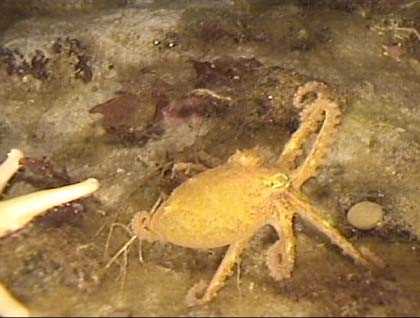A relaxing day at sea after six intense days on the Antarctic Peninsula is often a welcome reprieve. Yet, the thought of leaving “our home,” National Geographic Explorer, is always a difficult one. Some of us will continue on to more adventures in either Easter Island or Iguazu Falls, but most will go home to the “real world,” where a day without penguins scampering around our feet or humpback whales feeding below our bow is hard to imagine. But we continue north through a benign Drake Passage, our minds reliving the last week.
Life on the continent of Antarctica has many different faces: howling winds and blowing snow; bright sunshine gleaming off blue glaciers; penguins jumping into Zodiacs; and newly born chicks huddled close to their parents. But one cannot truly understand the Antarctic without understanding what is going on below the ocean’s surface, as the waters surrounding the Antarctic support almost all the life found on or around the continent, whether it be invertebrate, bird or mammal. Onboard National Geographic Explorer there is an Undersea Specialist whose purpose is to bring the beauty of the underwater world back to the guests in the comfort of the lounge during the evening recaps. The number one question an Undersea Specialist is asked: “what could possibly live underwater in Antarctica, the water is just too cold?” In actuality the marine world of Antarctica is a rainbow of colors and wonderful invertebrates.
Under the icy surface of Antarctica’s water is one of the least studied environments on the planet. Each year at least one new species is discovered in the waters surrounding the white continent. Additionally, scientists are finding that many of the chemical properties found in Antarctic invertebrates can be used in medicine. On our dives and while using the ROV (Remotely Operated Vehicle), we observed ancient seastars called crinoids; sunstars with 40 legs; giant isopods measuring 6 – 8 inches; and worms measuring up to one meter in length.
Now having learned what goes on below Antarctica’s icy waters enriches our understanding of the entire ecosystem of Antarctica, an ecosystem that relies on the productivity of the Southern Ocean. Without this understanding we could not truly comprehend the complexities and greatness of Antarctica.







